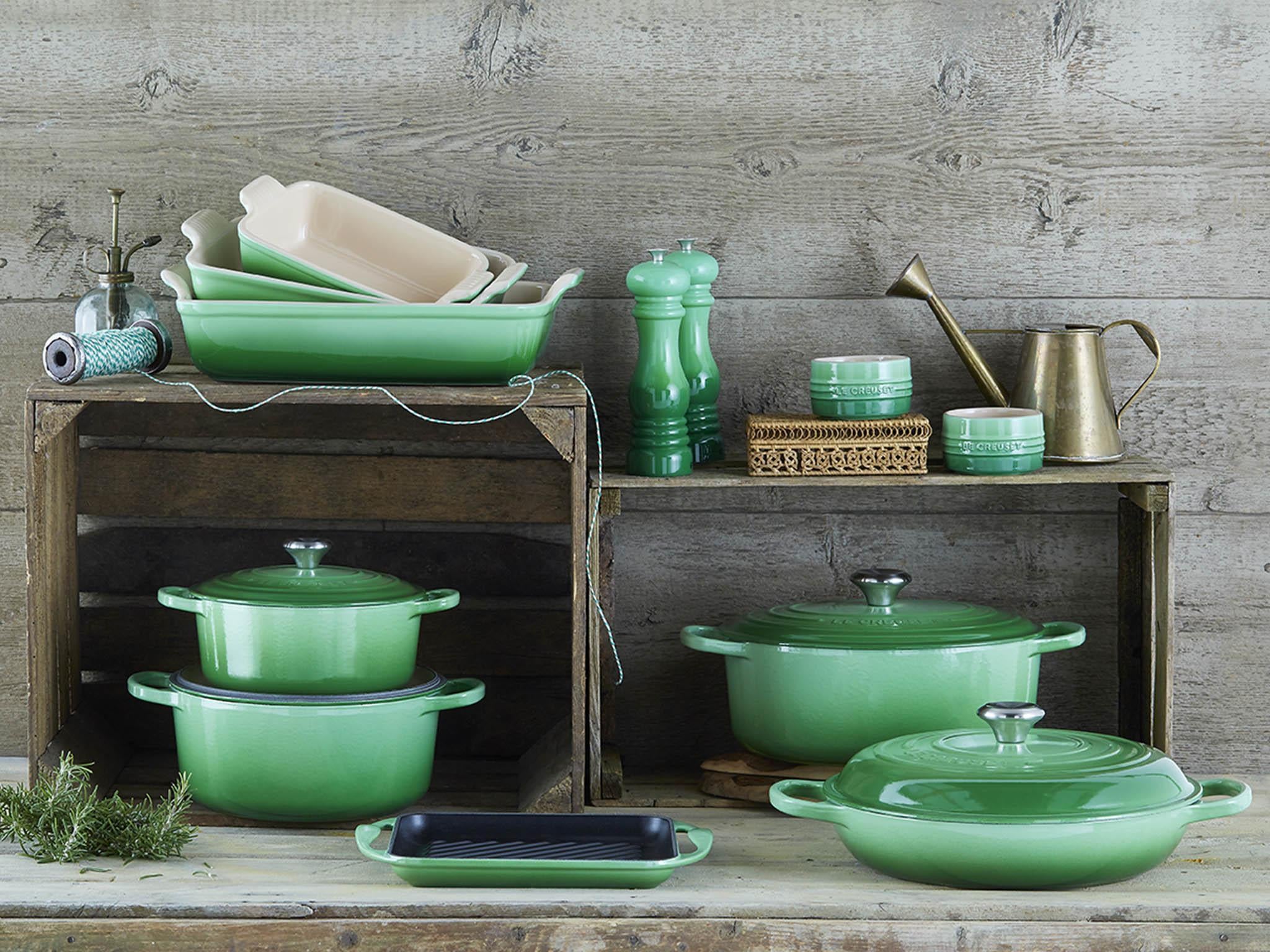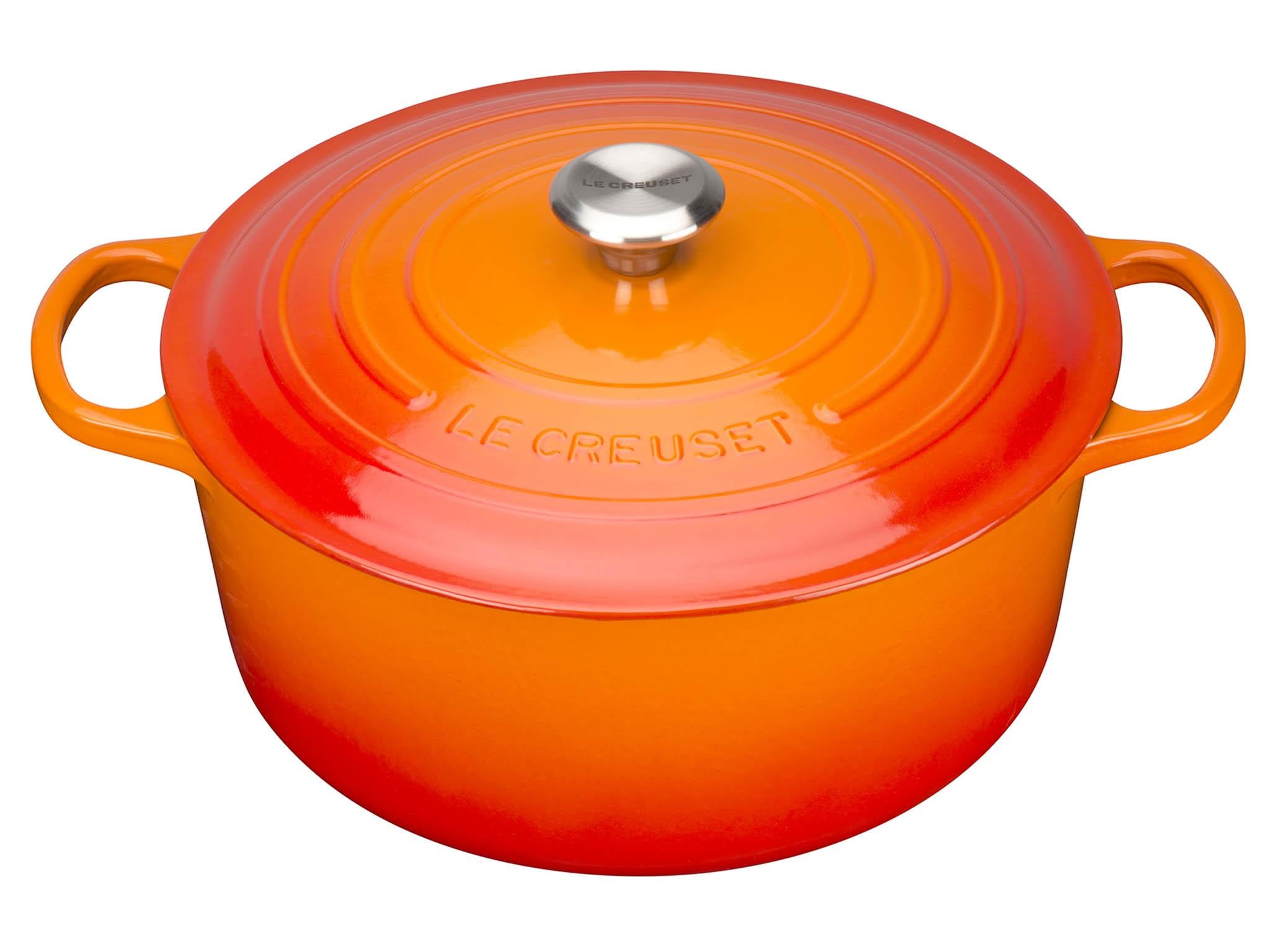Stirring the pot
Trademarked by the volcanic orange flame colour, the famed cast iron pots from Le Creuset are indispensable and quite literally worth their weight in gold

When I rented my first flat, my ever-practical Mum did two things: she helped paint the walls and gave me a complete set of cookware. The decorating was appreciated, but the cookware? I should have been thrilled. It was the latest and greatest with a high-tech, non-stick coating developed in some secret laboratory that – so I was told – made cooking and clean up a breeze. The only problem was that I hated it. I struck a deal with my Mum: I traded her my shiny, new cookware for her well-used Le Creuset®. We were both happy.
Today, I still have my Le Creuset. Hers? Long gone. Durability is only one of the strengths of traditional Le Creuset enamelled cast iron cookware. You could use it every day for all your cooking days without a problem. When our prized small Le Creuset saucepan lost its wooden handle (one brush with an open gas flame too many), we found a replacement handle on eBay. Of course, ‘normal’ people would have tossed out the old and simply bought a new saucepan but with Le Creuset the very idea seemed ridiculous. The new handle was attached and the saucepan was back in business.
Durability is the holy grail in cookware and something that many talk about, but few deliver. It’s not a surprise when you think that cookware is used every day and takes a beating from even the gentlest cook. While Le Creuset enamelled cast iron pots could chip if dropped (cue child chucking pan onto tiled floor), it’s not been common in my kitchen. The enamel interior can stain (avoid red wine) and darken over time. While they don’t recommend it, I find that a very occasional drop or two of bleach brings the interior back to life.

To find out why Le Creuset stands up to the heat in the kitchen, you need to go back almost one hundred years. The brand was the brainchild of two industrialists: Armand Desaegher (a casting specialist) and Octave Aubecq (an enamelling specialist). The two Belgians met at the Brussels Fair and came up with the idea to create a foundry where they could enamel cookware. A year later and they were up and running with Le Creuset. The name comes from the French for ‘large caldron’ or ‘melting pot’, which they used to melt the raw materials. They chose Fresnoy-le-Grand in Aisne, France for their factory since it was located on a trading route for the coke, iron and sand needed to make Le Creuset.
Cast iron wasn’t a new idea; people have been cooking on it since Roman times and it offers a lot of benefits. For one, cast iron distributes heat evenly so food is cooked evenly – no hot or cold spots. It also retains heat after you remove it from the oven so your food doesn’t go cold quickly (nice if you’re entertaining and guests want seconds). The issue with traditional cast iron is that you need to season it so that food doesn’t stick. You have to maintain this seasoning too, so no detergent or vigorous scrubbing during clean-up.
What Desaegher and Aubecq did was to add a vitreous enamel coating inside their cast iron cookware. This meant it had all the benefits of cast iron but there was no need to season it. You could also leave food in Le Creuset and the attractive shapes and styles meant it was the perfect oven-to-table cookware.
Today, Le Creuset is still made in much the same way it always has been. To make each piece, they create two sand moulds: one for the outer shape and one for the inner. They melt the raw materials for the cast iron and pour it into the moulds. Once they’ve cooled, the cast iron is removed, the mould is broken, and the sand is recycled. So each piece of Le Creuset is unique.
The pieces are finished and they then get two coats of enamel. The first coat is clear, the second coat is where the colour comes in. And colour is one of Le Creuset’s hallmarks. Volcanic flame – a truly fiery orange – is their signature but they’ve introduced other colours along the way. I’ve always been a Marseille blue person but must admit that Rosemary – one of their newer colours – is calling my name.
Le Creuset enamelled cast iron cookware isn’t cheap – prices start at around £79 for a 20cm oval gratin dish and over £400 for a 40cm oval casserole. But when you consider that it lasts a lifetime, it’s not a bad investment. Their range goes far beyond enamelled cast iron too with lines of bakeware, stainless steel, stoneware, non-stick as well as hard anodised cookware, so you can kit your whole kitchen out if you desire.
But for now, I’ll get out my oval cocotte – one of their original products and still the most popular. I’ll make my slow cooked lemony chicken thighs and thank my Mum for making that trade with me many years ago.
Join our commenting forum
Join thought-provoking conversations, follow other Independent readers and see their replies
Comments
Bookmark popover
Removed from bookmarks